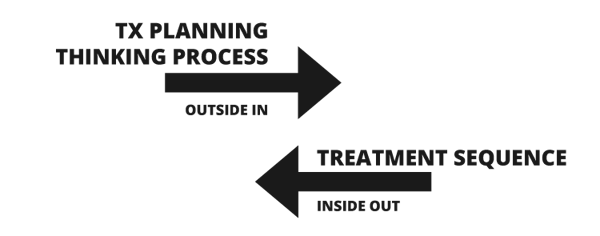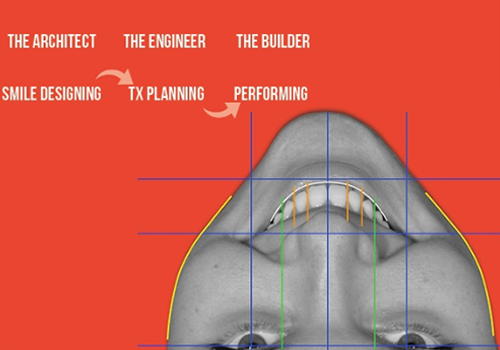Becoming A Smile Designer
There is no easy path to becoming knowledgeable on a certain topic. For me, lecturing is an incredible and humbling learning experience. Whenever I decide to teach on a certain topic, something that I think I am good at, I realize how much I don't know about it.
That's why I always repeat to myself: "The best way to learn is to teach". Realizing how much I don't know is the best motivational experience to start studying and learning more. I was always inspired by mentors who were really focused on studying and searching for information. One of these mentors is Marcelo Calamita.
After every important meeting, he always had the summary of all the lectures and we would then sit down together and discuss the highlights. He also catalogued all major articles and wrote summaries of most of them, facilitating my learning process hugely.
The topics we discuss in this blog are the result of many years of reading, processing, discussing, and organizing these ideas.
WHY IS BECOMING A BETTER SMILE DESIGNER SO IMPORTANT?
The Smile Design project is the starting point of a modern interdisciplinary, facially driven, treatment plan. Esthetics is not more important than function and biology, but it will define the initial vision and permit the integration of biology and function into the best esthetic outcome possible.
The traditional thinking process places function, biology and structure first. Even though these aspects are the most important and are our final ultimate goal, by analyzing them first, one will miss the opportunity to create the most facially integrated and esthetic outcome without harming the principles listed above.

The thinking process, when elaborating a treatment plan, should start from the face, based on a smile design project. Comparing this ideal project with the actual pre-op situation will highlight discrepancies. Finding solutions to minimize these discrepancies is facially driven treatment planning. When the *outside in plan* is ready, the clinical procedures should be organized into the best sequence and timing possible, usually starting from the basic biological and functional issues to set the stage for the final desired esthetic outcome.
Facially driven treatment planning is the concept that confirms the importance of designing before planning. A concept that was first introduced to us in lectures and classic articles by great mentors such as John Kois and Frank Spear. The thinking process is very well described in classic articles from Kokich, Spear and Kois and was revisited in a recently published book from Dr. Jonathan Levine et al.
.png?width=600&name=Blog_Imagery-01%20(1).png)
Advantages of Becoming a Better Facially Driven Smile Designer:
- Better quality and more complete treatment plans
- Functional/biological outcomes that look better
- Present the treatment in a more attractive way, creating value for the client since they naturally understand more about smile design than about clinical procedures
- Giving meaning to surgeries and orthodontic movements by linking their need to the final visual smile design project integrated with faces
- Sending the message that we are not only good clinicians, but also artistic smile designers and facial analyzers
- Motivating the clinic staff because it's always exciting to see the impact of a new confident smile on a patient
- Improving the communication between the specialists and technicians through visual smile design communication
- Getting everybody on the same page
- Improving the relationship between the initial design and the final outcome
A Smile Designer shouldn't seek the perfect smile, but instead should provide harmonious and ultimately confident smiles. If a patient smiles with confidence, even when not presenting an ideal smile from the esthetic perspective, and has a healthy system, there is no reason to change their smile. What we want is to help people who don't smile with confidence. It is very interesting to read this article from Anne Beall and watch the TED Talk by Ron Gutman -- both talk about the power of smiling.
People who don't like their smile, consciously or subconsciously, usually don't like to smile and don't like to have their pictures taken. It is an emotional mutilation. We can easily analyze the phenomenon across social media. When we go to somebody's profile and we can't find smiling images; it may be because that person is not confident enough to smile. Whether they admit it or not is another issue. And this phenomenon is not necessarily related to esthetics, it has everything to do with confidence. Regaining that confidence and relearning how to smile is what we do many times as oral rehabilitators.
"The data from this study clearly demonstrates that a smile has a tremendous impact on perceptions of one's attractiveness and one's personality. Previous psychological research has shown that attractive people are perceived as more successful, intelligent, and friendly. This research extends these findings by demonstrating that the teeth alone can have an impact on overall attractiveness and perceptions of personality attributes."
- Anne E. Beall. Dent Clin N Am 51, 2007

Planning a beautiful smile works much the same as planning a beautiful house. We should start with the architect (smile designer) and not with the engineer (treatment planner) or builder (clinician). As a technician, I always wanted to help my dentists to improve the link between our initial vision and the final outcome.

In order to make this happen, I realized that:
1. Firstly, I needed to improve my initial vision.
2. Secondly, I needed to bring this vision to my working model.
3. Thirdly, I needed to create protocols to guide the clinical steps to follow that vision.
For me, this is the adventure of becoming a real smile designer! Being a good clinician or ceramist is different to being a good Smile Designer; it's an entirely different set of skills and mindset. It's a new 'specialism' that should work in collaboration with the treatment planning team, clinical team and tech team.
Do you want to learn how to become a modern dentist?
6 Smile Design Cases
The 25 DSD Storylines



